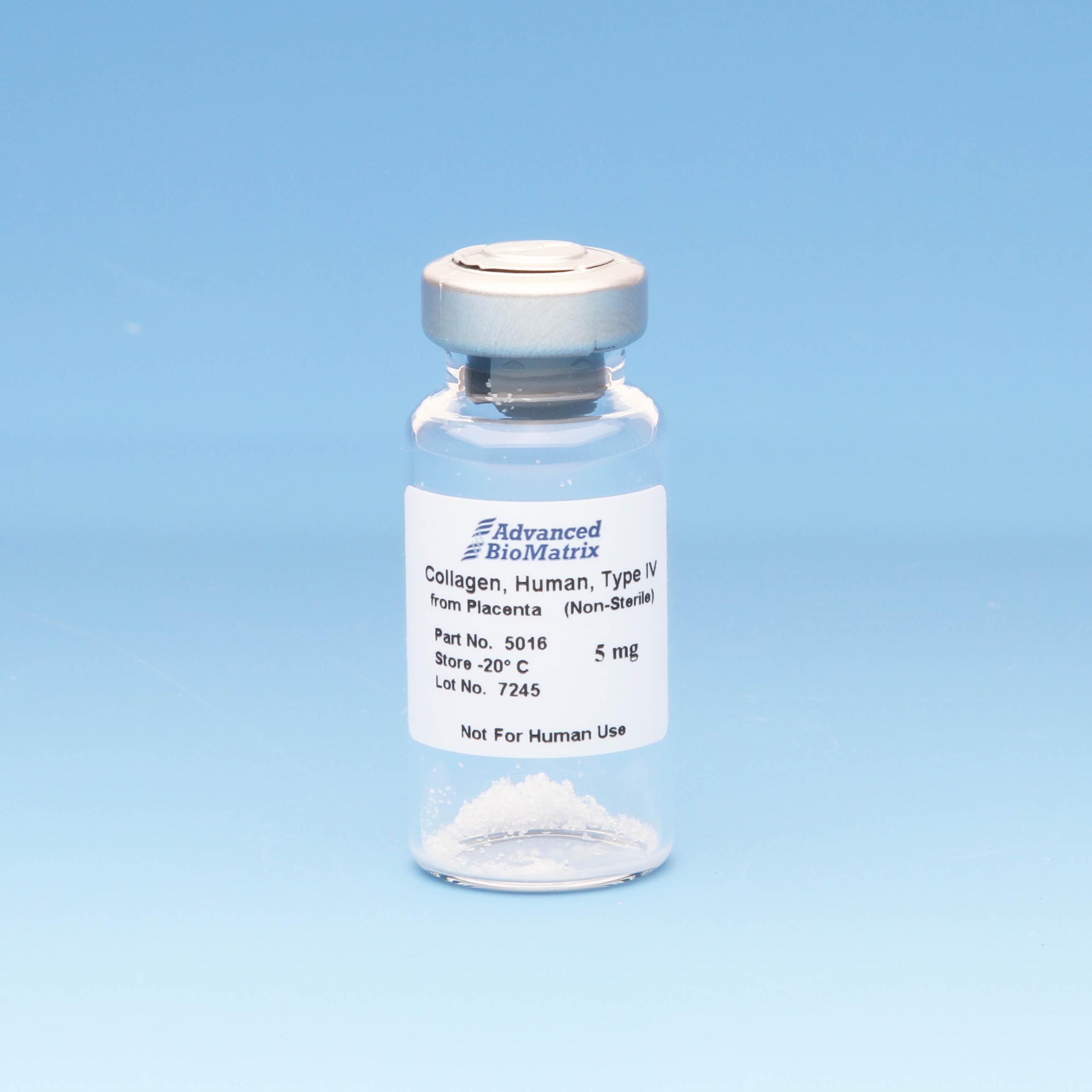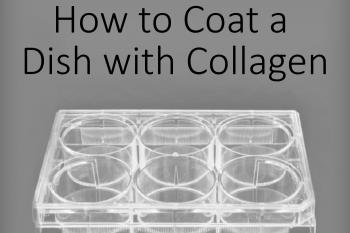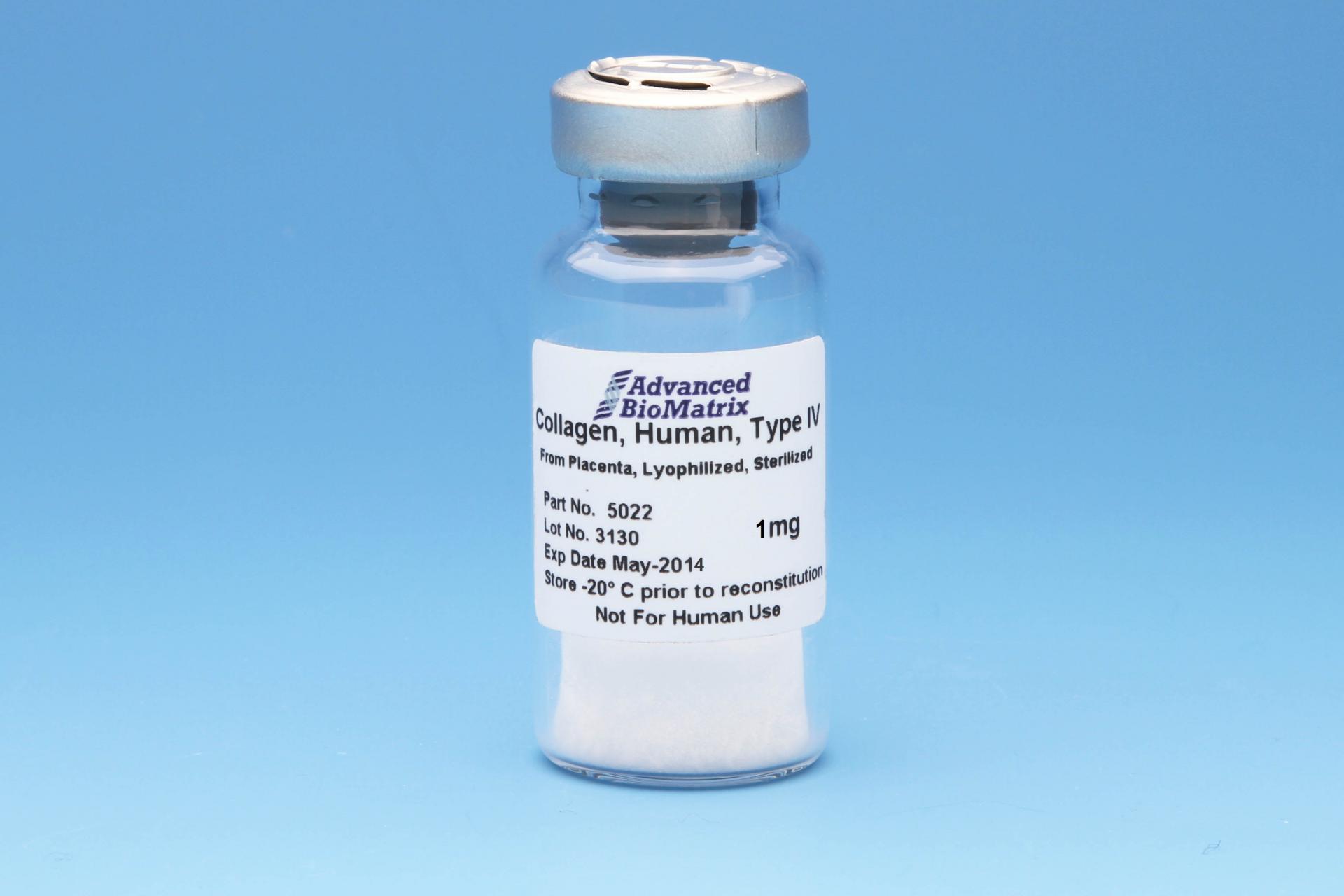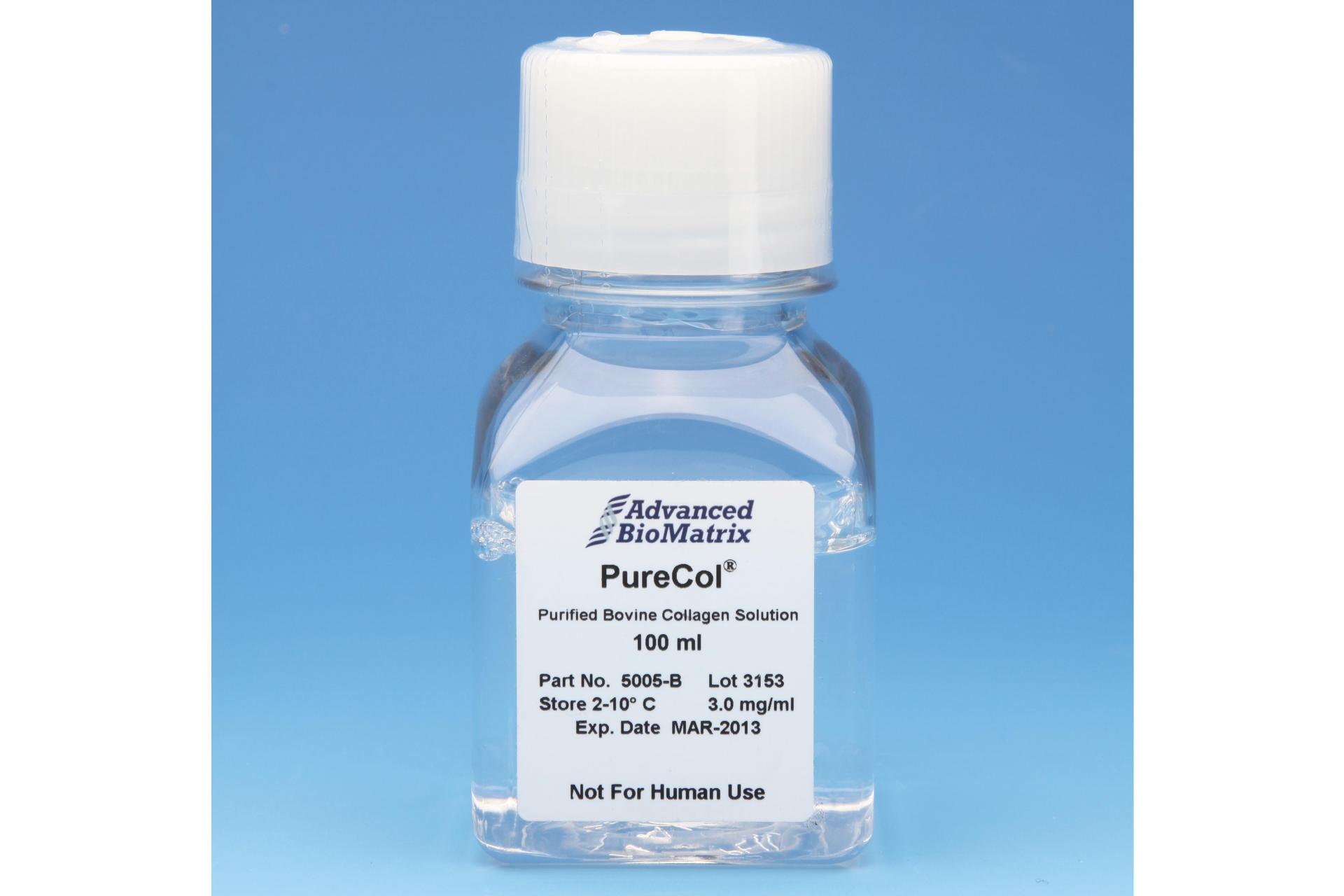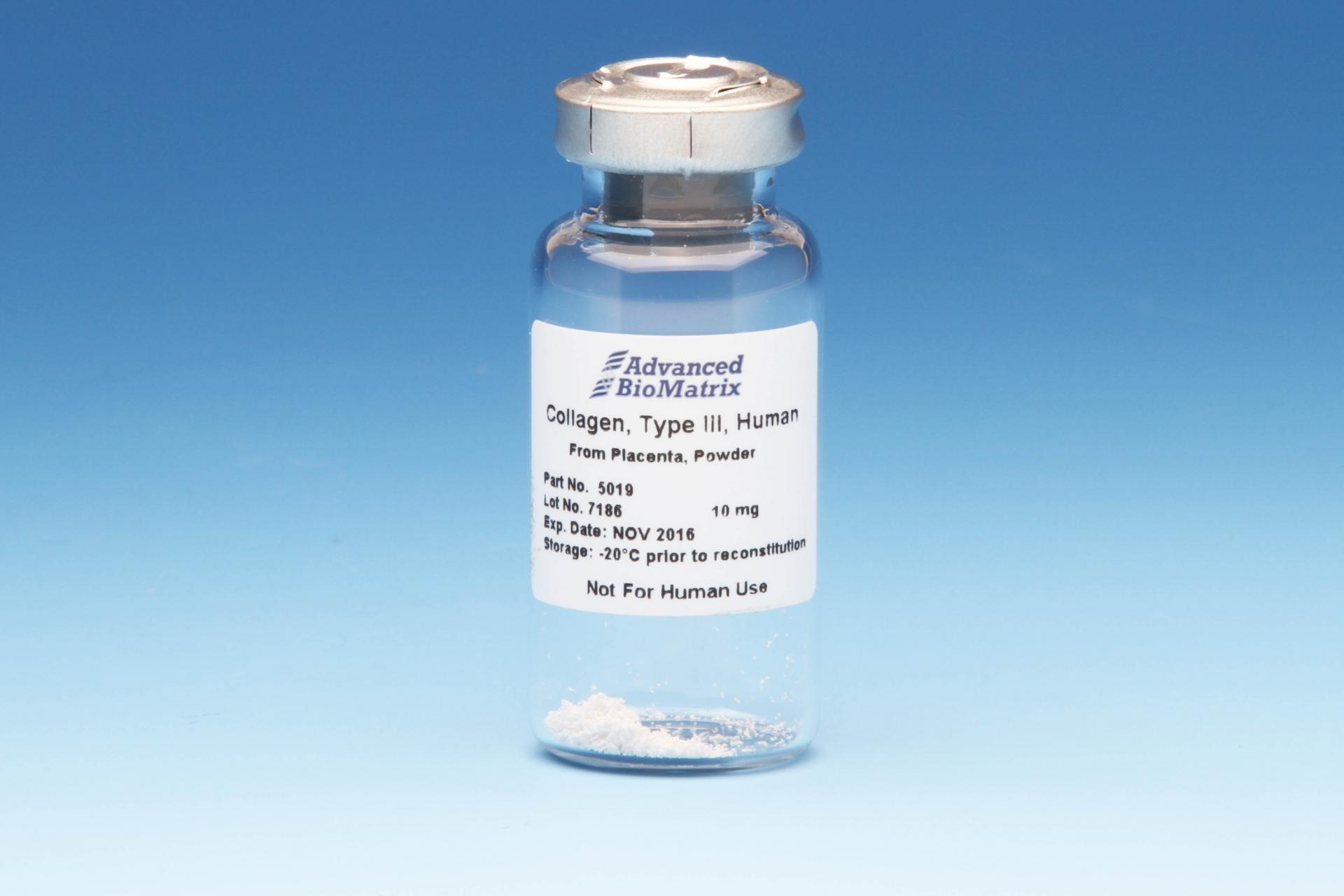-
Collagen
-
Type I - Atelocollagen
- PureCol® Solution, 3 mg/ml (bovine) #5005
- Nutragen® Solution, 6 mg/ml (bovine) #5010
- FibriCol® Solution, 10 mg/ml (bovine) #5133
- PureCol® EZ Gel, Solution, 5 mg/ml (bovine) #5074
- PureCol® Lyophilized, 15 mg (bovine) #5006
- VitroCol® Solution, 3 mg/ml (human) #5007
- VitroCol® Lyophilized, 15 mg (human) #5008
-
Type I - Telocollagen
- TeloCol®-3 Solution, 3 mg/ml (bovine) #5026
- TeloCol®-6 Solution, 6 mg/ml (bovine) #5225
- TeloCol®-10 Solution, 10 mg/ml (bovine) #5226
- RatCol® for 3D gels, Solution, 4 mg/ml (rat) #5153
- RatCol® High Concentration, Solution, 10 mg/ml (rat)
- RatCol® lyophilized, 100 mg (rat)
- RatCol® for Coatings, Solution, 4 mg/ml (rat) #5056
- Type I - Insoluble Collagen
- Type I - Bioinks
- Type II Collagen
- Type III Collagen
- Type IV Collagen
- Collagen Standard
- PureCol® Collagen Coated Plates
- Collagen Scaffolds
- Collagen Hybridizing Peptides
-
Type I - Atelocollagen
- Tunable Stiffness
- CytoSoft® Rigidity Plates
-
Bioprinting
- Support Slurry for FRESH Bioprinting
- Collagen Bioinks for Extrusion Bioprinting
- GelMA Bioinks for Extrusion Bioprinting
- Photoinitiators
- Bioinks and Components for DLP Bioprinting
- Bioink Components
- Methacrylated Collagen
- Methacrylated Gelatin
- Methacrylated Hyaluronic Acid
- Diacrylates
- Methacrylated Polysaccharides
-
3D Hydrogels
- Thermoreversible Hydrogel
- Silk Fibroin
-
Type I Collagen for 3D Hydrogels
- PureCol® Solution, 3 mg/ml (bovine) #5005
- Nutragen® Solution, 6 mg/ml (bovine) #5010
- FibriCol® Solution, 10 mg/ml (bovine) #5133
- PureCol® EZ Gel, Solution, 5 mg/ml (bovine) #5074
- VitroCol® Solution, 3 mg/ml (human) #5007
- TeloCol®-3 Solution, 3 mg/ml (bovine) #5026
- TeloCol®-6 Solution, 6 mg/ml (bovine) #5225
- TeloCol®-10 Solution, 10 mg/ml (bovine) #5226
- RatCol® for 3D gels, Solution, 4 mg/ml (rat) #5153
- HyStem® Thiolated Hyaluronic Acid
- Methacrylated Collagen
- Methacrylated Gelatin
- Methacrylated Hyaluronic Acid
- Diacrylates
- Collagen Sponges
- Methacrylated Polysaccharides
- Extracellular Matrices
- HyStem / Hyaluronic Acid
-
Adhesion Peptides / Proteins
-
Recombinant Adhesion Proteins
- CD2, 0.5 mg/ml #5086
- CDH3, 0.5 mg/ml #5124
- CDH13, 0.5 mg/ml #5125
- CD14, 0.5 mg/ml #5089
- CDH18, 0.5 mg/ml #5090
- CD40, 0.5 mg/ml #5093
- CD86, 0.5 mg/ml #5096
- CD164, 0.5 mg/ml #5100
- CD270, 0.5 mg/ml #5127
- CD274, 0.5 mg/ml #5126
- CD276, 0.5 mg/ml #5123
- E-Cadherin (CD324), 0.5 mg/ml #5085
- ICAM2, 0.5 mg/ml #5107
- Adhesion Peptides
- Collagen Hybridizing Peptides
-
Recombinant Adhesion Proteins
- Reagents
- Assays
Type IV Collagen
Powder, Non-sterile (Human)
Catalog #5016
Type IV Collagen
Powder, Non-sterile (Human)
Catalog #5016
This Type IV Collagen is isolated from human placenta and is purified using a multi-step process. The product is supplied as a non-sterile powder containing 5 mg of Type IV collagen per vial.
Product Description
This Type IV Collagen is isolated from human placenta and is purified using a multi-step process. The product is supplied as a non-sterile powder containing 5 mg of Type IV collagen per vial. A Certificate of Analysis is available with the purchase of each product.
Type IV Collagen is the primary collagen found in the extracellular basement membranes separating a variety of epithelial and endothelial cells. It is a major component of the dermal-epidermal junction where it is mostly found in the lamina densa. It is a heterotrimeric molecule containing two Alpha 1-like and one Alpha 2-like chains.
Type IV Collagen is typically used as a thin coating on tissue culture surfaces. Specific instructions are found in the Directions for Use. This product is generally used in vitro as a substrate scaffold to enhance cell attachment, adherence and proliferation. Type IV collagen may be used to culture epithelial, endothelial, muscle, nerve and many other cell types. Additionally, this product is suitable for use as a substrate for collagenase assays and positive controls.
| Parameter, Testing, and Method | Type IV Collagen Powder #5016 |
| Form | Powder |
| Package Size | 5 mg |
| Storage Temperature | -20°C prior to reconstitution and 2-10°C after reconstitution |
| Shelf Life | Minimum of 6 months from date of receipt |
| Shelf Life after reconstitution | 3 months |
|
Adventitious Agents |
Human source has been tested and found negative for Hepatitis B, C and immunodeficiency virus-1. |
|
Electrophoretic Pattern - Coomassie Blue |
Characteristic |
| Endotoxin (LAL) | <1.0 EU/mL |
| Cell Attachment Assay | Pass |
| Source | Human Placenta |
Directions for Use
Download the full PDF version or continue reading below:
Preparation Procedure
Note: This product is not sterile and is not intended for applications requiring sterile materials.
- Reconstitute the 5 mg vial with 5 ml of cold 0.25% acetic acid and mix by pipetting up and down several times. Allow to sit at 2 to 8°C swirling periodically for > 1 hour.
Note: The resulting solution will be slightly hazy. If there are some insoluble materials present and you wish to remove it, centrifuge the material for approximately 2 minutes at 3000 RPM . - Dilute the product to desired concentration with sterile 0.25% acetic acid if required.
Product Q & A
The Type IV collagen undergoes an enzyme step in the purification process, resulting in Atelocollagen.
Product References
References for Type IV Collagen:
Stanton, Bruce A., et al. "Pseudomonas aeruginosa reduces VX-809 stimulated F508del-CFTR chloride secretion by airway epithelial cells." PLoS One 10.5 (2015): e0127742.
Kang, Yun Gyeong, et al. "A three-dimensional hierarchical scaffold fabricated by a combined rapid prototyping technique and electrospinning process to expand hematopoietic stem/progenitor cells." Biotechnology letters 38.1 (2016): 175-181.
Pageau, Steven C., et al. "The effect of stromal components on the modulation of the phenotype of human bronchial epithelial cells in 3D culture." Biomaterials 32.29 (2011): 7169-7180.
Fulcher, M. Leslie, and Scott H. Randell. "Human nasal and tracheo-bronchial respiratory epithelial cell culture." Epithelial Cell Culture Protocols. Humana Press, Totowa, NJ, 2012. 109-121.
Sellgren, Katelyn L., et al. "A biomimetic multicellular model of the airways using primary human cells." Lab on a Chip 14.17 (2014): 3349-3358.
Ozeki, Nobuaki, et al. "Gelatin scaffold combined with bone morphogenetic protein-4 induces odontoblast-like cell differentiation involving integrin profile changes, autophagy-related gene 10, and Wnt5 sequentially in human induced pluripotent stem cells." Differentiation 93 (2017): 1-14.
Ozeki, Nobuaki, et al. "Differentiation of human skeletal muscle stem cells into odontoblasts is dependent on induction of α1 integrin expression." Journal of Biological Chemistry289.20 (2014): 14380-14391.
Product Certificate of Analysis
No result for .
Product Videos
Product Disclaimer
This product is for R&D use only and is not intended for human or other uses. Please consult the Material Safety Data Sheet for information regarding hazards and safe handling practices.
